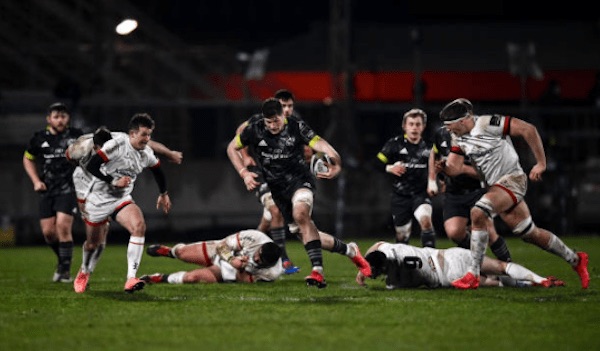The involvement of the Vodacom Bulls, Lions, Sharks and Stormers in the Rainbow Cup will have a positive impact on South African rugby as a whole, writes ANDRE-PIERRE CRONJE.
So, it’s official – South African rugby is headed north. The ‘big four’ franchises are set to participate in the newly created Rainbow Cup later this year and the expectation is for their longer-term involvement in an expanded PRO16 competition.
Eventually it is hoped that SA franchises will be permitted to qualify for the Champions Cup and, in so doing, gain access to a lucrative tournament boasting the best teams across Europe. Whether this comes to fruition remains to be seen, but for the time being it looks as though SA club rugby’s future is decidedly European.
Much has been made of the move north, both here in South Africa and in Europe, and not all of it has been positive. Whatever the reservations may be, though, it’s worth delving into some of the potential benefits of the new state of affairs.
There are a plethora of financial and logistical benefits to the move, and these may well be further explored at a later date. This column, however, focuses quite specifically on the benefits conferred to SA rugby by regularly playing in northern-hemisphere conditions.
It’s often been said that play in the northern hemisphere more closely resemble that of Test rugby. The cold and rainy winter weather means that the game is ‘slower’ and consequently more set-piece orientated and dictated by miserly defence rather than flamboyant attack.
It’s easy enough to see how this will complement the SA style of play – a rugby philosophy deeply rooted in forward dominance, Trojan defence and ‘superior discontent’. Poor weather will, if anything, magnify our teams’ existing strengths.
It is my firm belief, however, that these conditions will actually benefit our attack. While this may seem counter-intuitive, allow me to explain.
As a result of the slower game in the northern hemisphere (brought about by the conditions but also by increased breakdown contesting), defences have more time to set after each phase. Attacking teams therefore aren’t as readily able to rely on using quick ball to beat defences before they have time to realign.
What this has meant, is that northern-hemisphere teams have had to be more creative and patient in how they look to attack. Instead of relying on linebreaks against disorganised defenders, teams have to work systematically to move, manipulate and break down defences. Space is less easy to come by, so sides must find a way of creating it.
The most successful northern-hemisphere teams (with Leinster, Exeter, Saracens prime examples) are those that have the skills, patience and nous to sustain a multi-phase attack before landing the killer blow. I cannot stress enough how beneficial it would be for SA rugby to try to emulate this.
In South Africa there is an overreliance on individual moments of brilliance in order to score tries. For the most part, our sides’ ball retention is poor and beyond using abrasive ball-carriers to get across the gainline, we look rudimental in our attacking shape.
This is partly why most of our sides employ a ‘kick-and-contest’ strategy – happy to win games by forcing penalties rather than creating scoring opportunities. PRO rugby (and, later down the line, possible Champions Cup involvement) could be what finally forces our backlines to start playing more creatively.
South African fans regularly bemoan the inability of our flyhalves to give direction to attack and criticise our backs of being one-dimensional, but with the transition northward that may change.
It is also important to note that because the PRO16 competition is likely to be played in the northern hemisphere’s winter, it will also be played in the SA summer. There will be no shortage of opportunities, therefore, to play on fast and dry pitches, either.
In a sense, PRO rugby offers the best of both worlds; one week a team is being tactically dismantled in a frigid Ireland, the next they are being shredded with pace in the South African heat.
The variety of challenges and styles of play that the tournament will now offer will be beneficial not just to SA sides, but for all the teams taking part.





